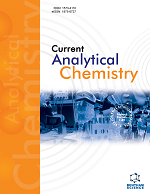
Full text loading...

Transition metal oxides are highly effective for dye removal due to their adaptable surface chemistry, availability, and robust mechanical and thermal properties. Among them, Bi4V2O11 nanosheets offer potential due to their morphology and high surface area. To synthesize Bi4V2O11 nanosheets and evaluate their performance in removing malachite green, focusing on the impact of adsorbent amount, contact time, and interfering ions on dye removal efficiency. This study aims to evaluate the performance of Bi4V2O11 nanosheets in removing malachite green dye from aqueous solutions and to examine the effects of adsorbent dosage, contact time, and the presence of coexisting ions on the sorption process.
Bi4V2O11 nanosheets were synthesized and used to remove the malachite green dye. Batch experiments were conducted to study the effects of adsorbent dose, contact time, and coexisting ions (Na+, Ca2+, and tannic acid). Equilibrium data were fitted to the Langmuir isotherm model to determine the maximum sorption capacity.
Malachite green sorption using Bi4V2O11 nanosheets reached equilibrium within 240 minutes, demonstrating efficient dye removal under the tested conditions. The sorption process conformed to the Langmuir isotherm model, indicating monolayer adsorption with a maximum capacity of 47.27 mg/g. While the presence of Na+ and tannic acid had negligible effects on dye removal efficiency, the coexistence of Ca2+ significantly reduced the removal efficiency from 95% to 58%, highlighting the potential impact of divalent ions on the adsorption process.
Bi4V2O11 nanosheets are effective adsorbents for malachite green removal, demonstrating high sorption capacity and resilience to Na+ and tannic acid interference. However, the presence of Ca2+ significantly reduces removal efficiency, highlighting the need for further optimization in practical applications.
Bi4V2O11 nanosheets offer high sorption capacity and structural stability, environment friendly synthesis procedure, making them feasible for small-scale or pre-treatment applications.

Article metrics loading...

Full text loading...
References


Data & Media loading...
Supplements